George Pope didn’t expect a global pandemic to provide him with a better sleep, much less a new bed. But increased disability benefits due to COVID-19 gave him three.
“When we got the first cheque, I went in and inquired about getting a new bed, because I have a two-inch rip in my mattress,” said the 53-year-old father, who lives in Richmond.
Then he thought about his kids. “My daughter’s bed was basically a mattress on the floor. My son’s outgrown his bed. So we got three beds from Sleep Country — they have a good finance plan, you can spread it over three years.”
The upgrade wasn’t cheap.
“It was a pretty chunk of change,” says Pope. “But with the extra $300 I felt confident enough to walk in there and say, ‘I need $1,000 worth of beds, and I will repay you.’”
In late March, when B.C. realized that COVID-19 would be around for the foreseeable future, the provincial government moved on a policy change that activists and advocacy organizations have requested for decades. People receiving disability and income assistance saw their monthly rate raised by $300 starting in April.
The emergency rate increase was initially only for three months, but it was a welcome development nonetheless.
“Disabled and poor people have been living in an ongoing crisis of poverty and inaccessibility,” says Vivian Ly. “It’s a crisis that is artificially created by an ableist and often punitive social services and benefits system, and a crisis that was worsened by the pandemic.”
Ly is an organizer with the #300ToLive coalition, a group of disabled and neurodivergent people formed in May to call on the B.C. government to maintain the crisis supplement and increase assistance rates moving forward.
“Past incremental increases to assistance rates, including the temporary COVID supplement, fall drastically short of what’s needed to live in B.C.,” says Ly. “With the CERB [Canada Emergency Response Benefit], we have seen recognition that the minimum amount to live on is around $2,000 a month per person. But disabled people have been expected to live on $500 less than that, despite facing additional costs due to inaccessibility and medical needs. And those on just income assistance have to survive on even less.”
Before COVID-19, the disability assistance rate for an individual was $1,183 per month. For an individual receiving income assistance, the rate was $760, making the $300 raise a nearly 50-per-cent improvement.
While the NDP raised assistance rates by $100 for income assistance and $150 for disability in 2017, and by another $50 for both in 2019, both rates had been stagnant for almost a decade under the former BC Liberal government. For people living in urban areas like Vancouver, one of the most expensive cities in North America, this kept many far below the poverty line.
According to a report by the Canadian Centre for Policy Alternatives, in February more than 200,000 people in B.C. received income or disability assistance — about four per cent of the population. This number is expected to increase in the coming months as people face the fallout of unemployment and insecurity created by the pandemic.
On July 6, the Ministry of Social Development and Poverty Reduction announced that the crisis supplement would be carried forward for two additional months — July and August. While welcomed, people like Pope are hopeful that this will mean longer-lasting change.
“We’re very grateful that they’ve extended an extra two months,” he said. “But we hope they will extend it more with the campaign efforts. I think there’s a wave of support for this.”
Ly and #300ToLive have been collecting people’s stories about the impacts of the $300 raise over the last two months.
“The increase has made significant improvements to the quality of life of some disabled and poor people,” she says. “Many folks are now finally able to afford fresh food, clothing, shelter and other basic necessities. They can avoid starvation near the end of the month, pay off credit cards that were used to stretch meagre incomes, and break out of poverty cycles.
“But while the supplement has been life-changing for many, we have heard widely that it is still not enough. It’s still below the poverty line and is only a start.”
The Tyee asked three people on assistance to share their stories from the last few months. Read them below.
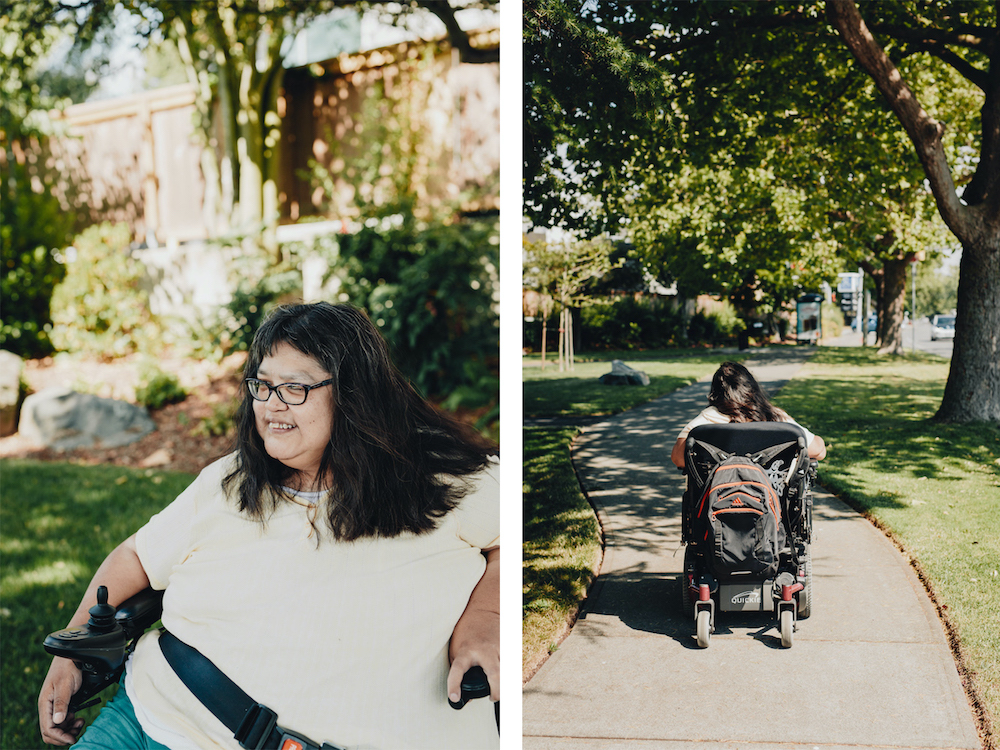
Charlene Barney, Victoria
Charlene Barney has lived in Victoria since 1991. In that time, she’s seen the city change significantly. But COVID brought something entirely different.
“I was scared to go out for the longest time,” she says. “I would go out maybe every three weeks to get groceries.”
Barney lives in a government assisted-living complex and shares her townhouse with one other person. She has her own bedroom and bathroom but shares a kitchen and small fridge. That means she often doesn’t have space to stock up on food — a problem during lockdown.
Barney has been on provincial disability assistance since she was 19. She pays $375 towards rent each month, the standard shelter allowance. The rest ($808) goes to food, health needs and occasional entertainment.
“It’s hard sometimes to divide it up,” she says of the pre-COVID amount. “I try not to spend too much. But sometimes it’s really hard to enjoy food when it’s not fresh… I eat canned food or ready-prepared food. I can’t always choose what I would like to eat or drink.”
With the additional $300 she’s received since April, Barney has been able to afford better quality groceries.
She’s also been able to budget for her medical appointments, which include regular podiatry visits. While a portion is covered by the government, Barney must still pay more than $50 each time.
If the $300 COVID supplement were extended or made permanent, Barney says she would be able to afford consistently healthier food and better medical care, including prescription glasses and needed dental work.
She would also like to see the government relax the income exemption limit for people on disability assistance in B.C. People receiving assistance can only earn up to $12,000 per year before their disability payments are taken away.
“I think it would be good if the government doesn’t take away our income if we do make a little extra from our paying jobs,” she says. “To me, that kind of eliminates what we can do. If they take it away, it basically means that we’re not allowed to work.”
Barney currently works part-time as an administrative assistant for a local non-profit that provides services for urban Indigenous youth and families. She would like to work more hours or find a second part-time job “in order to keep afloat,” but is afraid of losing her disability support.
Ultimately, she believes the disability rates need to be raised.
“This rate increase is only temporary — until the end of August. I’m hearing from people that it should be permanent. I think that would help, but I think we need to make it more than $300. Life is expensive, and we will still have to choose what to pay for.”
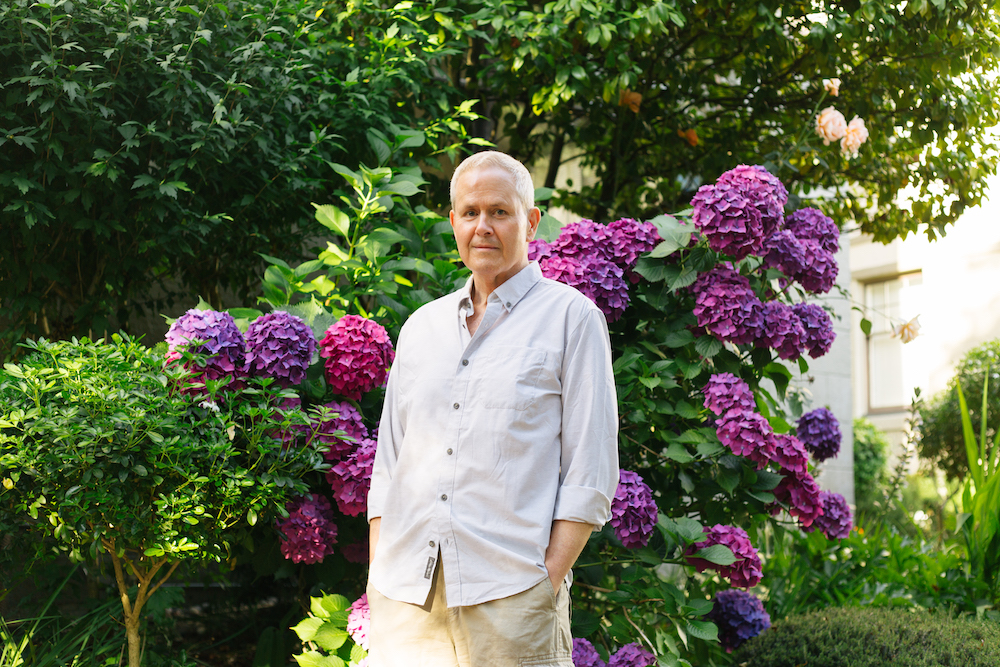
DM Gillis, Vancouver
DM Gillis feels lucky to have found a place he can afford in Vancouver. He has been living in his West End apartment for more than 20 years, paying rent that is “too high,” but manageable relative to the rest of the city.
“It probably puts me in better stead, housing-wise, than a lot of people,” he says.
Gillis, who has been on disability assistance for the last 10 years and used to work for the Disability Alliance of BC, knows the struggles of the province’s disabled and low-income population intimately.
“At some point it was decided that, for people receiving disability assistance, it was OK to go hungry every month and to live in substandard, unsafe housing,” he says. “Some of us have gotten around the housing part one way or the other, but in the end there’s always the financial problems around food and good nutrition and clothing.”
Like Barney, Gillis has used the extra $300 to pay for better groceries. In addition to his long-term disability, Gillis also has Type 1 diabetes and had quadruple bypass heart surgery several years ago. As a result, he says, “It’s crucial that I use a portion of that money for better nutrition.”
“For me, the $300 has meant that I can buy oranges. I don’t have to eat just brown rice and beans,” says Gillis, who is vegetarian. “I can buy veggie dogs. They cost more, but I can now fit them into my budget. Instead of that cheap $1.50 loaf of bread you buy at the grocery store, I can actually go to Cobs and buy a more expensive loaf of bread that is better for me.”
He believes that keeping people in poverty perpetuates a cycle of poor health and disability, which ultimately ends up costing the government more money.
“For the last 10 years I’ve been eating a lot of high-fat, refined foods, because that’s what you can afford — and I ended up having a quadruple bypass. That wasn’t cheap; I was in the hospital for two weeks. They did this major surgery, and there were all these medications I had to be on. And a person with diabetes has to test their blood several times a day. If they gave people enough money to eat properly, we could have avoided this. Maybe I wouldn’t have needed anything. There’s a real false economy around it.”
While Gillis is very thankful for the extra $300 crisis supplement, he also wonders why it took so long.
“I know on the surface it’s for COVID-19, but people on disability assistance face health crises every day. They come in the form of food insecurity, mobility issues, access issues, isolation, lack of housing… the list goes on. It’s excellent that we’ve gotten the extra $300, but what happens when it goes? In a perfect world we’d be up at the poverty line of $2,000, but we’re not, we’re provided half of that, and now a bit more with the $300, but it’s going to go.”
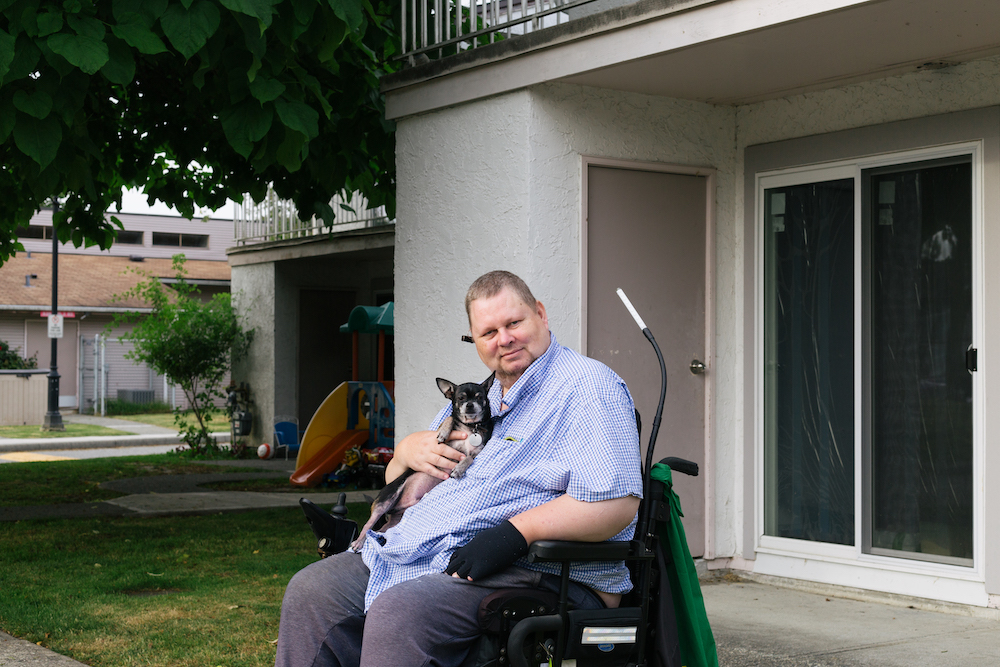
George Pope, Richmond
One of the first things that George Pope did when he found out he’d be receiving $300 extra per month on top of his regular disability payments was take his rescue dog to the vet.
“Our old vet kept overbilling us, and we didn’t have the money to keep up with it,” he says.
“Our dog has been suffering for a few years from allergies and skin issues. We saw a new vet that was highly recommended. He did a full checkup, a blood analysis and a skin check, and all together it was a $900 bill. We had managed to save up some extra money and basically without that extra $300 we wouldn’t have been able to do it.”
He says it was a “lifesaver,” not just for the dog, but for his whole family: his wife, adult stepdaughter and his 11-year old son who all share his BC Housing-subsidized townhouse in Richmond.
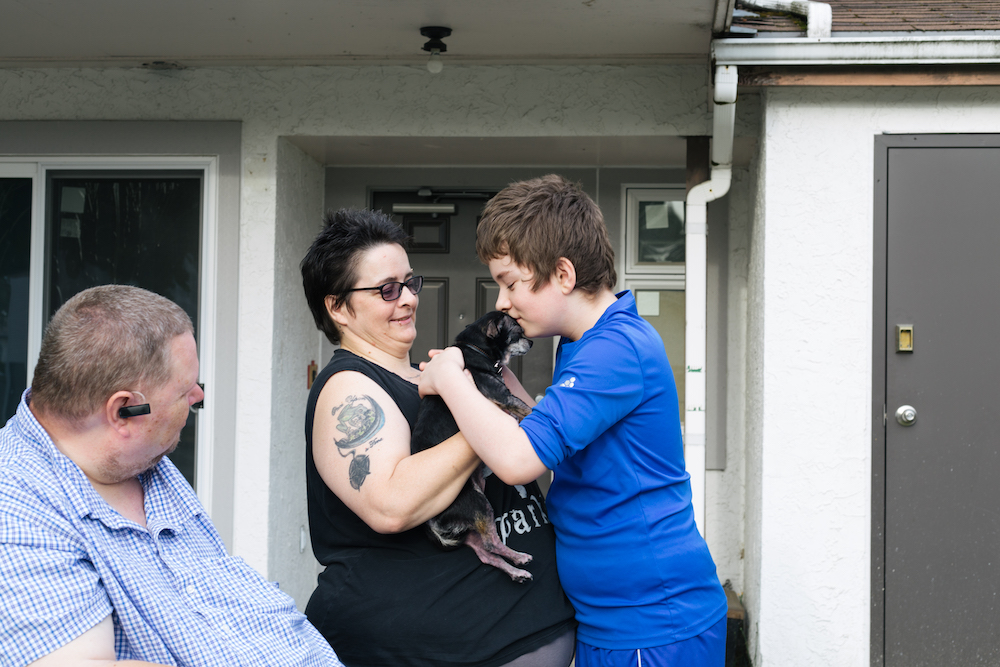
Pope has been on disability assistance since January 1990 after experiencing a brain aneurysm that left him with mobility loss.
He initially returned to work full time but reduced his hours to part time when his health began to decline. For the last several years, he’s worked one day a week as a telehealth assistant, keeping him within the income allowance for persons with disabilities.
Pope feels he is “better off” than a lot of people on provincial disability, as he has a roof over his head and a steady source of additional income. But he’s still faced his challenges.
“I was just making it pay day to pay day,” he says of life before COVID. “I’m lucky because I get an extra cheque because I have a child under 18. But my child is special needs. I get higher PWD for having a spouse but not for having a child with a disability.”
For him and his family, the $300 has meant the difference between a sense of security and constant stress.
“When you’re living under the poverty level, it’s just: ‘Here’s what you need to take care of everything, and if you don’t have it, you live without.’ So there’s less of doing without. We can actually get fresh milk, which is important, especially with a growing boy. We can get juice instead of powder. We can get fresh vegetables.”
Pope is hopeful that the extra crisis money will be extended.
“With COVID, everybody’s realizing that they could actually lose everything — it’s not always because you’ve made bad choices. I think people are understanding that now.”
“I’ve been homeless before. I’ve had my issues with substance abuse and addiction. I’ve gotten a leg up when I’ve needed it and without that I wouldn’t be here,” he says. “I want to be part of a community that ensures that people get where they need to be.” ![]()
Read more: Rights + Justice, Food, Coronavirus, Housing



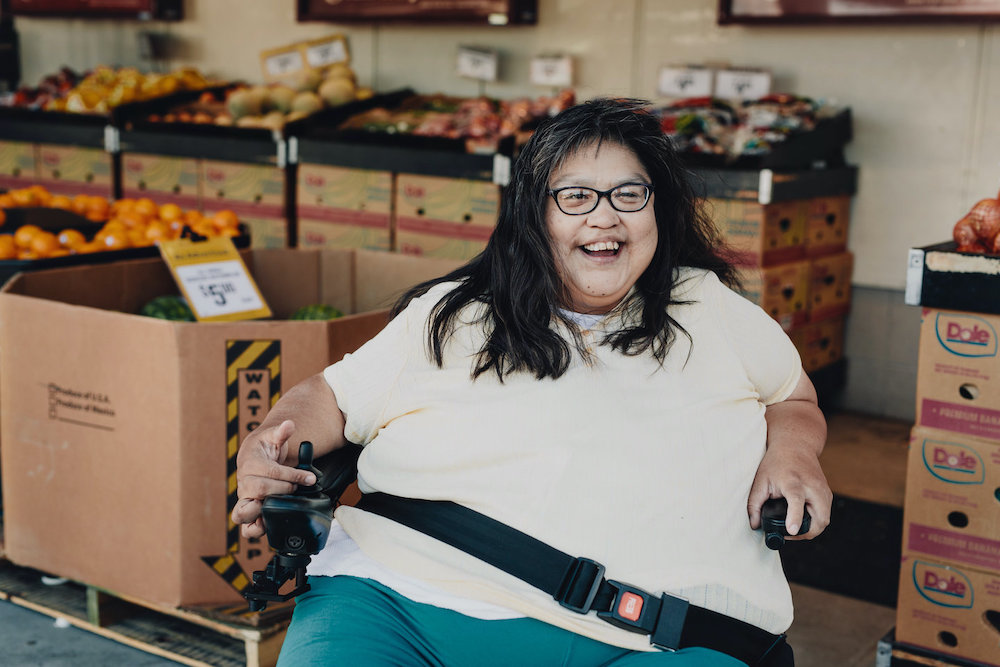












Tyee Commenting Guidelines
Comments that violate guidelines risk being deleted, and violations may result in a temporary or permanent user ban. Maintain the spirit of good conversation to stay in the discussion.
*Please note The Tyee is not a forum for spreading misinformation about COVID-19, denying its existence or minimizing its risk to public health.
Do:
Do not: